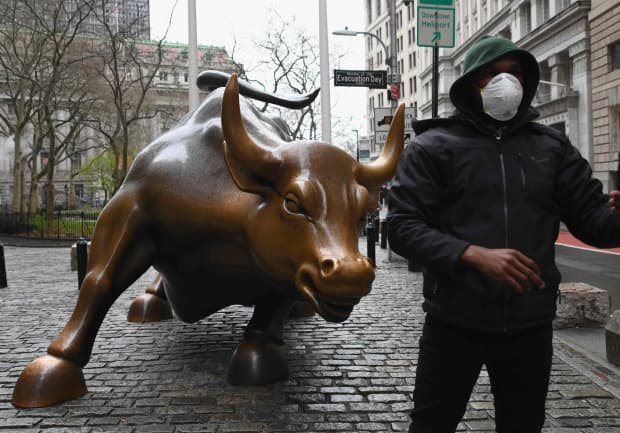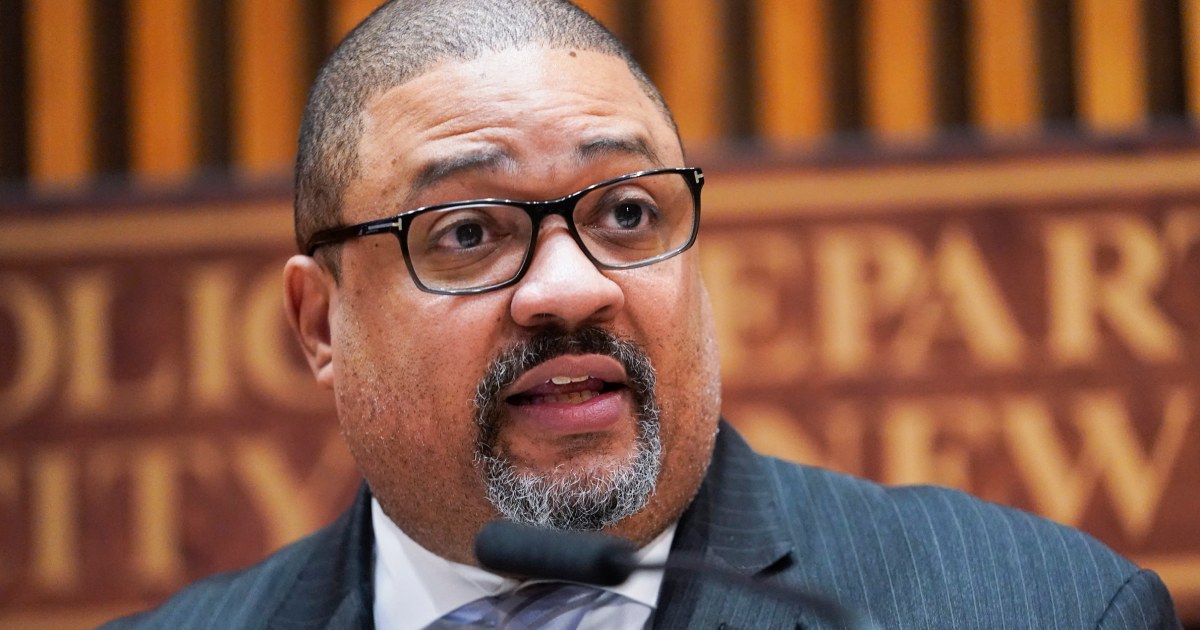# Hedge-fund selling was not ‘primary driver’ of Treasury market turmoil, Fed study says

Table of Contents
“#
Hedge-fund selling was not ‘primary driver’ of Treasury market turmoil, Fed study says
”
Regulators need to explore reforms in the critically important Treasury market, Fed’s Brainard says

A man wearing a face mask takes a selfie at the Charging Bull statue.
angela weiss/Agence France-Presse/Getty Images
Hedge funds were not the primary villains of the turmoil in the Treasury market as the grip of the coronavirus intensified in March, according to a Federal Reserve report released Monday.
“Conversations about the crisis always mention hedge funds. Everyone acknowledges they were key contributors,” said Jeremy Kress, a former Fed staffer and now a professor at the University of Michigan’s Ross School of Business.
Banks have been under tighter control in the wake of the Dodd-Frank reforms put in place after the financial crisis. The Fed report suggests hedge funds won’t be singled out and other firms like mortgage REITs, and electronic trading firms may all come under scrutiny as market extremes are reviewed.
The Fed report concludes that there are risks to the financial system if investors get disappointed by the battle against the cornavirus, but overall the system is resilient due to strong efforts by the central bank since the pandemic struck the economy in March.
But it also includes a restrospective on the March 2020 turmoil in Treasury and mortgage-backed securities markets, typically thought of as the deepest and most liquid markets.
The Fed moved in quickly to counter the selling pressure and poured $2 trillion in the Treasury market in an successful bid to stabilize the overall financial system. In addition, the central bank started about a dozen lending programs designed to help credit flow to all corners of the market. The Fed has continued monthly purchases of $120 billion of Treasurys
TMUBMUSD10Y,
and mortgage-related debt to keep markets stable.
In the wake of the emergency action, federal regulators have begun to ask questions about what reforms to the Treasury market might be needed so that there is no repeat of the crisis.
“The resurgence of fragility and funding stress in the same nonbank financial sectors in the COVID-19 crisis and the Global Financial Crisis highlights the importance of a renewed commitment to
financial reform,” said Fed Governor Lael Brainard in a statement.
“The March turmoil highlights the importance of exploring reforms in the critically important Treasury market,” she added.
The Fed report noted it didn’t have comprehensive data on hedge funds’ Treasury cash and derivatives positions.
Kress said the Treasury Department’s Office of Financial Research has the authority to ask hedge funds for the data.
“If the Fed is aware of specific data that could help prevent a similar meltdown in the future, the Fed should ask the OFR to acquire it,” he said.
Here are important players in the Treasury market turmoil listed in the Fed report and a brief description of the roles they played.
- Foreign institutions. The Fed report estimated that foreign central banks and other institutions sold more than $200 billion of Treasurys in March to raise U.S. dollar cash in order to hold precautionary liquidity and to intervene in foreign exchange markets.
- Hedge funds. Relative value trading strategies, which seek to arbitrage small price differences between Treasury cash securities and futures, fell apart in late February and early March as market volatility increased. This lead many relative-value hedge funds to reduce their Treasury positions. Lack of good data makes final conclusions hard to reach, the report said.
- Mortgage REITS. These firms fund their holdings of long-maturity assets using short-term borrowing in the agency RMBS repo market through dealers. At the same time, they hedge their interest rate risk by taking short positions in Treasurys. These trades also fell apart in March triggering margin calls and precipitated forced selling and rapid deleveraging in the RMBS market until the Fed stepped in on March 23 and announced increased purchases of agency RMBS.
- Principal trading firms. These firms use high-speed and automated trading strategies. While in the past this has kept bid-asked spreads in the Treasury market tight, the performance of the firms in March has been questioned. Some research points to a slowdown in the speed in which these firms were replenishing quotes on the order book in response to trades. “The reduction in high-speed market making activities appears to have contributed to the spread of pandemic-related stresses to even the most liquid segments of financial markets,” the Fed said.
- Treasury Dealers. Investment firms who usually playing a central role bringing together buyers and sellers in Treasury and RMBS markets, dealers had absorbed large amounts on less liquid securities on their balance sheets by late February. Two weeks later, some dealers reportedly reached their capacity or became unwilling to absorb further sales. Market commentary points to this as an important factor in the deterioration of the functioning of the markets.
By
Greg Robb
For forums sites go to Forum.BuradaBiliyorum.Com
If you want to read more News articles, you can visit our News category.



